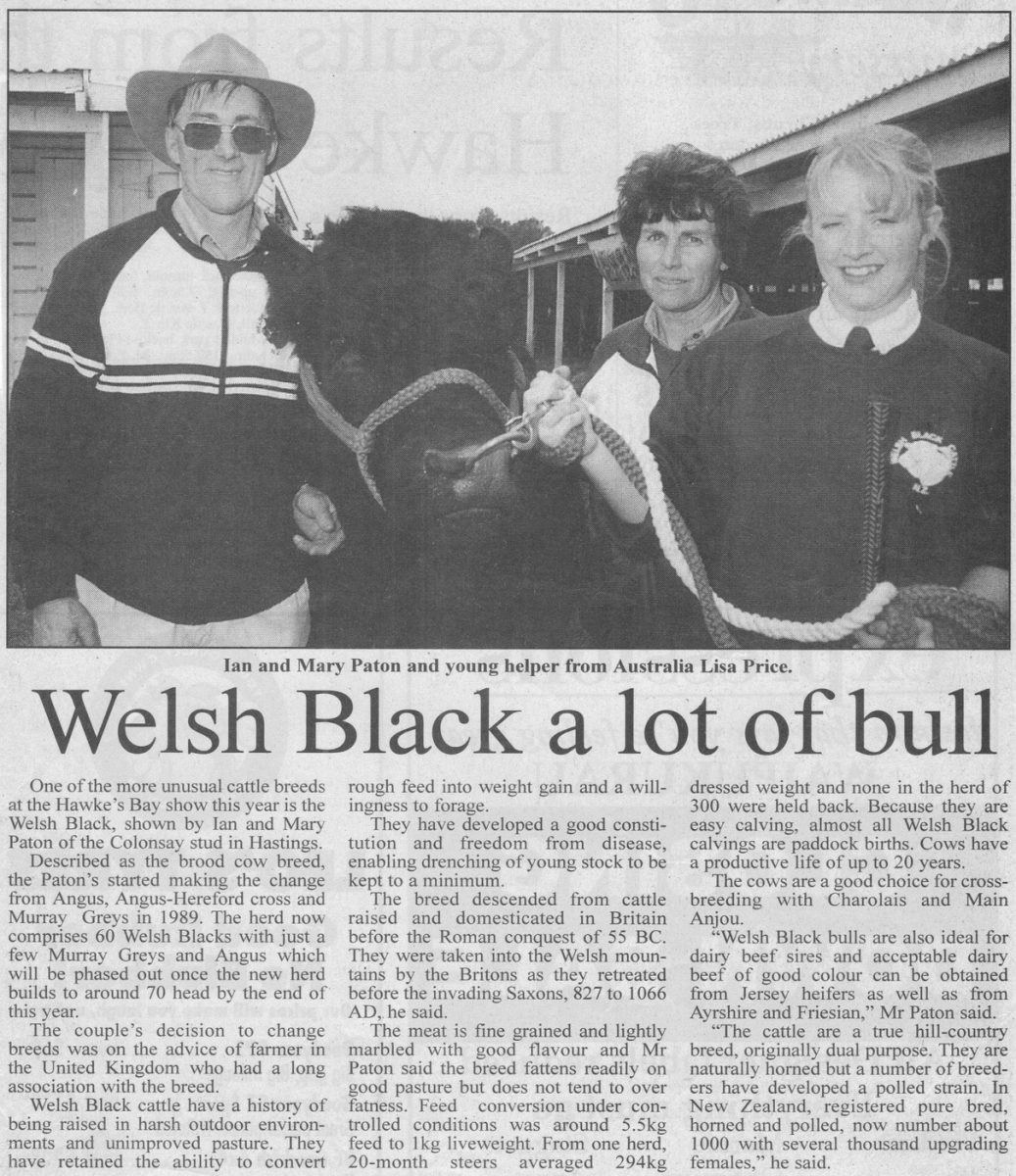Welsh Black a lot of bull
One of the more unusual cattle breeds at the Hawke’s Bay show this year is the Welsh Black, shown by Ian and Mary Paton of the Colonsay stud in Hastings.
Described as the brood cow breed, the Paton’s started making the change from Angus-Hereford cross and Murray Greys in 1989. The herd now comprises 60 Welsh Blacks with just a few Murray Greys and Angus which will be phased out once the new herd builds to around 70 head by the end of this year.
The couple’s decision to change breeds was on the advice of farmer in the United Kingdom who had a long association with the breed.
Welsh Black cattle have a history of being raised in harsh outdoor environments and unimproved pasture. They have retained the ability to convert rough feed into weight gain and a willingness to forage.
They have developed a good constitution and freedom from disease, enabling drenching of young stock to be kept to a minimum.
The breed descended from cattle raised and domesticated in Britain before the Roman conquest of 55BC. They were taken into Welsh mountains by the Britons as they retreated before invading Saxons, 827 to 1066 AD, he said.
The meat is fine grained and lightly marbled with a good flavour and Mr Paton said the breed fattens readily on good pasture but does not tend to over fatness. Feed conversion under controlled conditions was around 5.5kg feet to 1kg liveweight. From one herd, 20-month steers averages 294kg dressed weight and none in the herd of 300 were held back. Because they are easy calving, almost all Welsh Black calvings are paddock births. Cows have a productive life of up to 20 years.
The cows are a good choice for crossbreeding with Charolais and Main [Maine] Anjou.
“Welsh Black bulls are also ideal for dairy beef sires and acceptable dairy beef of good colour can be obtained from Jersey heifers as well as from Ayrshire and Friesian,” Mr Paton said.
“The cattle are a true hill-country breed, originally dual purpose. They are naturally horned but a number of breeders have developed a polled strain. In New Zealand, registered pure bred, horned and pollen, now number about 100 with several thousand upgrading females,” he said.
Photo caption – Ian and Mary Paton and young helper from Australia Lisa Price.












Do you know something about this record?
Please note we cannot verify the accuracy of any information posted by the community.